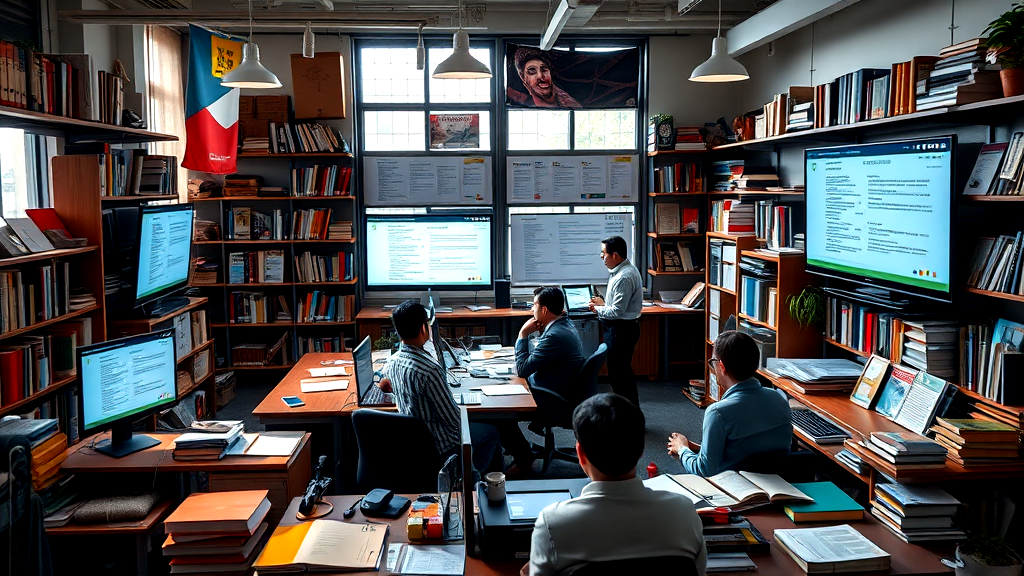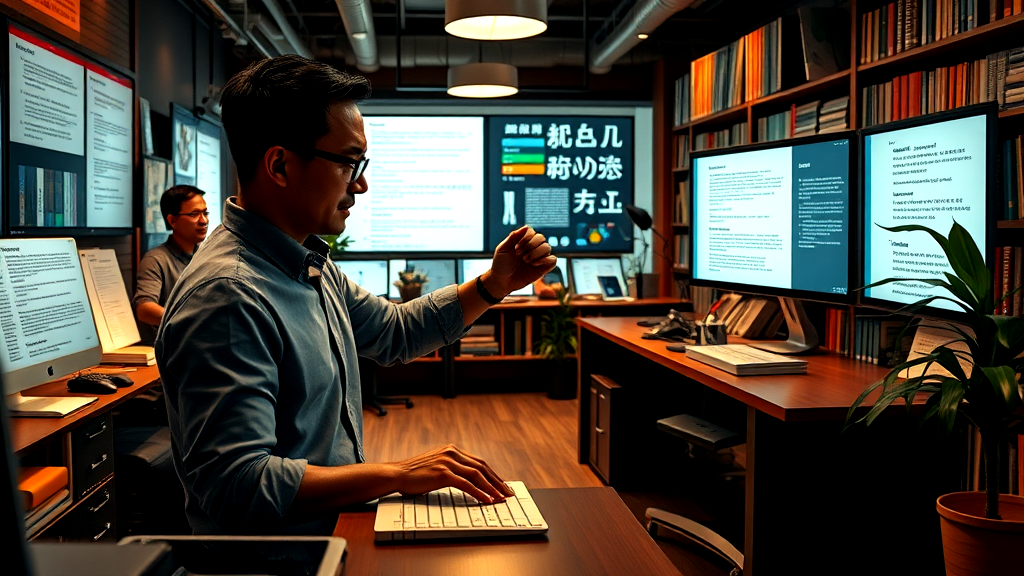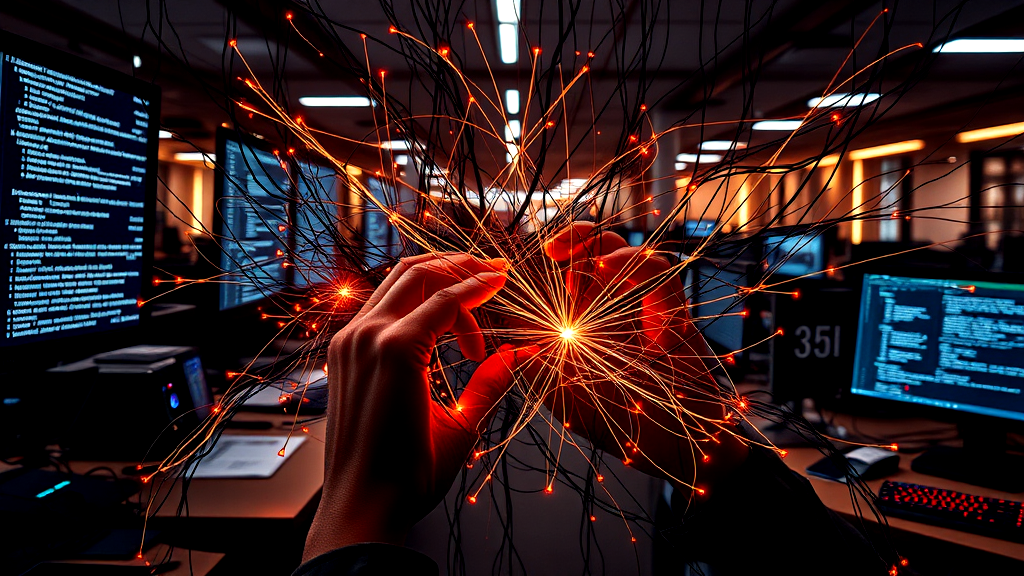AI translation still needs human touch for editing
AI translation is a marvel of modern technology, but it isn’t perfect. It handles massive amounts of text quickly, saving time and effort. Yet, it often misses the mark with idioms and cultural nuances. This is where human expertise steps in to fine-tune results.
Human editors ensure translations accurately convey original meanings. They catch errors that AI might miss, especially in creative language. Combining the speed of AI with the critical thinking of humans leads to high-quality translations.
This collaboration is much like the construction industry. Machines handle the heavy lifting, but people bring the finesse. Ultimately, the synergy between artificial intelligence and human intelligence creates a seamless translation experience.
Key Takeaways
-
AI translation is fast and efficient but often lacks contextual accuracy.
-
Human editors fix errors and ensure cultural nuances are respected in translations.
-
AI excels in speed; humans add critical thinking and cultural understanding.
-
Combining AI and human skills ensures high-quality, accurate translations.
-
Ongoing training with human expertise helps AI handle complex language patterns better.

Understanding the Limits of AI Translation
Grasping the boundaries of AI translation requires understanding its inherent limitations. While AI rapidly translates large text volumes, it often stumbles over context and subtlety. I find AI translation needs human touch to smooth out errors, especially when idioms or culturally specific content come into play. AI models, grounded in pre-existing data, sometimes err with complex language or emotional tone.
Human experts refine these translations, ensuring they convey the intended meaning accurately. They identify contextual inaccuracies that might slip past AI. This partnership is key to producing translations that resonate with readers. AI shines in speed and volume, but humans bring critical nuance and cultural insight.
To illustrate, AI often misses creative language like metaphors or humor. These require human intuition for accurate interpretation. This is where the synergy between AI and human intelligence becomes invaluable. Humans bridge the gap, providing cultural understanding where AI falters.
Table: AI Translation vs. Human Touch
|
Aspect |
AI Translation Strengths |
Human Touch Needs |
Combined Benefit |
|---|---|---|---|
|
Speed |
Fast processing |
Cultural understanding |
Efficient and relevant translations |
|
Volume |
Handles large text |
Ensures context and nuance |
Accurate mass translations |
|
Complexity |
Manages straightforward |
Refines creative language |
Quality and depth |
|
Cultural Sensitivity |
Lacks depth |
Adds cultural context |
Culturally appropriate translations |
List: Why AI Needs Human Input
-
AI lacks nuanced understanding.
-
Machines miss cultural subtleties.
-
Humans refine emotional tone.
-
AI struggles with creative language.
-
Human oversight ensures accuracy.
-
Machines rely on pre-existing data.
-
People handle idiomatic expressions.
-
Human touch ensures relev
For those curious about the broader implications of AI in language, Pew Research discusses AI’s impact on human jobs.

Role of Humans in AI Translation Editing
When thinking about how humans enhance AI-generated translations, it’s clear that AI translation needs human touch. Humans bring a layer of finesse to translations, stepping in where AI might stumble. I find it amusing how often AI gets tripped up by idioms or cultural quirks. It’s not just about swapping words; it’s about capturing the heart and soul of a message.
AI models can process massive data sets at lightning speed, but they often miss the mark on context. This is where people shine. I mean, who else can catch those subtle tone shifts that a machine might miss? The collaboration between AI and human editors is like a well-oiled machine—or maybe more like a dynamic dance.
Interestingly, the construction industry has seen similar human-AI team-ups. Just like in language, machines handle the heavy lifting, while human intelligence ensures everything fits just right. Speaking of fitting, construction companies know that AI makes construction more efficient, but it’s people who make construction work by adding the final touches.
And let’s not forget the wisdom shared by Pew Research on AI’s broader impact. They highlight how artificial intelligence is shaping future jobs, hinting at more symbiotic relationships between tech and people. As AI evolves, human oversight will remain crucial. Even in the realm of computer science, humans provide the creativity and insight machines crave. It’s kind of like how a state university offers more than just lectures; it gives students a rich tapestry of experiences shaped by real people.

Common Errors in Machine Translation
Errors in AI translation aren’t rare. Trust me, I’ve seen some doozies! Often, these mistakes stem from inappropriate word choices and a misunderstanding of tone. AI lacks the intuitive grasp of context or humor. It’s like trying to dance salsa to a waltz rhythm—awkward!
-
Homonyms and Polysemous Words: AI can trip over words with multiple meanings, picking the wrong one.
-
Lack of Cultural Insight: AI may translate words correctly but miss cultural nuances, causing misunderstandings.
-
Awkward Phrasing: Sometimes, AI translations sound like a robot wrote them. Oh wait, it did!
-
Idiomatic Expressions: AI struggles with phrases like “it’s raining cats and dogs,” which don’t mean what they say.
-
Metaphors: Creative language is tough for AI. It doesn’t think outside the box like we can.
-
Contextual Errors: AI often misses the broader context, leading to translations that don’t fit the situation.
-
Tone and Style Misinterpretation: AI can’t always catch the writer’s tone, resulting in translations that don’t match the original mood.
Human touch is the secret sauce that makes translations sing. It’s like adding a pinch of salt to a bland dish. If you’re curious about AI’s role in reshaping jobs, Pew Research offers some fascinating insights on the evolving dance between tech and people! Igor might even give it a cheeky nod.
How AI and Humans Complement Each Other
In the dynamic between artificial intelligence and people, I see a unique blend of strengths. AI translation systems shine in handling bulk tasks swiftly, yet AI translation needs human touch to iron out the wrinkles. This collaboration is like a drummer and a guitarist in a band—each knows their part, but together they make music.
Consider how machine learning powers AI to churn through data. It accelerates processes and makes construction companies more efficient. Yet, without human intelligence to interpret and refine, you might end up with translations as flat as a pancake. Humans bring the spice of cultural nuances and context, making sure the message isn’t lost in translation.
AI might seem like a wizard with endless spells, but human jobs still need the sorcerers of nuance. You see, people can catch the subtleties that a computer science algorithm might miss. In a state university setting, for instance, students learn the art of blending tech with the human touch, crafting solutions that resonate.
Picture construction industry professionals using AI to streamline processes. It makes construction work faster, yet without human oversight, errors could build up like unwanted bricks. And while artificial intelligence can guide, it can’t replace the heart and creativity people bring.
If you’ve ever wondered how this impacts us globally, the internet hall is buzzing with discussions. And for those curious about broader implications, check out the study on human-AI synergy in translation by Nature.
The Importance of Cultural Nuance in Translation
Grasping the significance of cultural subtleties in translation is like solving a puzzle. Each piece must fit perfectly. As much as I love what artificial intelligence contributes, AI translation needs human touch to finesse this process. AI might churn out words at lightning speed, but it lacks the human intelligence to grasp cultural nuances. Language is alive, infused with local flavors, histories, and emotions.
People bring this depth. They know when a phrase might seem off in a different culture or when humor might not translate. I remember a friend who relied on AI for translating an idiom. The result was hilariously wrong. It missed the mark entirely. That’s where people step in, ensuring translations truly resonate with the intended audience.
Consider how machine learning impacts translation. It processes vast amounts of data, but it needs human refinement to align with cultural contexts. Picture this: a construction industry meeting where technical terms are translated without cultural awareness. The message could be as clear as mud.
Even in the health care sector, where precision is paramount, human oversight ensures sensitivity and accuracy. This synergy between technology and people is like a dance, where each partner brings something unique to the floor. Just like construction companies need both tools and skilled workers, translation thrives on collaboration between AI and humans.
Whether in the halls of a state university or the bustling internet hall, the essence of translation lies in bridging gaps. By embracing both AI and the human touch, we ensure that translations are not just words but meaningful connections.
Case Study: Successful Human-AI Collaboration
The case of translating legal documents showcases how humans and AI form a powerful team. The initial translation phase is driven by AI, cranking through vast amounts of text at lightning speed. Yet, the AI translation needs human touch to ensure precision and compliance with legal standards. I find it similar to cooking—AI provides the base ingredients, but humans add the spices, adjusting for taste and nuance.
A harmonious blend of artificial intelligence and human intelligence, this collaboration brings out the best in each. The AI tackles repetitive tasks without breaking a sweat, while people are the creative chefs who enhance the final dish. This dynamic is not unlike how construction companies operate. They rely on machines for heavy lifting, but human judgment ensures the project aligns with the blueprint.
Such examples aren’t just confined to tech sectors. They stretch across fields, including health care and education, like when I witnessed a state university integrating AI in language courses. The students learned the nuts and bolts from AI, but the professors ensured the lessons resonated with human experiences. As the technology in machine learning advances, the need for that personal touch remains. It’s the glue that holds the translation together, making it relatable and precise.
|
Aspect |
AI Contribution |
Human Contribution |
Result |
|---|---|---|---|
|
Speed |
Rapid initial translation |
Verification and nuance |
Efficient, accurate output |
|
Cultural Awareness |
Basic understanding |
Deep cultural insight |
Culturally relevant translations |
|
Legal Compliance |
Drafting |
Detailed legal review |
Legally sound translations |
|
Emotional Tone |
Literal translation |
Emotional context |
Meaningful communication |
In essence, while AI continues to evolve, the human touch remains indispensable. The collaboration enhances efficiency, accuracy, and cultural sensitivity, ensuring the translation process is robust and reliable. For more insights into the future of technology, Pew Research offers a fascinating perspective here.
Training AI with Human Expertise
The training of AI with human expertise plays a pivotal role in refining AI translation capabilities. It’s like teaching a dog new tricks, but with more zeros and ones. Now, although machines are incredibly fast, they often miss the subtleties that make language rich and meaningful. This is where the human touch becomes irreplaceable, especially in fields like health care or the construction industry, where precision and empathy are paramount.
People bring intuition and cultural insight to the table, adding layers of understanding that machines lack. A machine might translate words, but it takes a person to convey emotions and cultural nuances. AI translation needs human touch for this very reason. Imagine a world where translations are as flat as a pancake; nobody wants that, right?
By incorporating human feedback, we enable AI to learn from its mistakes. This iterative process resembles how machine learning models improve over time. It’s a bit like teaching a child, but without the sticky fingers. This symbiosis is crucial for tasks in computer science or even construction companies, where accuracy is everything.
Sometimes, it’s all about connecting dots that machines can’t see. This is why artificial intelligence benefits from human expertise, ensuring translations are both accurate and culturally relevant. Think of it as a dance, where AI leads with efficiency, and humans add the flair.
In the future, I foresee a beautiful partnership evolving between AI and humans. People and machines will complement each other, blending speed with empathy. As Igor Link might put it, it’s all about finding that perfect balance.
Future of Translation: Human and AI Synergy
The evolving relationship between AI and humans in translation is like a dance. Each partner brings something unique to the floor. AI translation needs the human touch to navigate complexities and ensure cultural accuracy.
Imagine a world where all legal documents are translated perfectly. AI tackles the bulk, saving precious time. However, without human expertise, nuances might slip through the cracks. This synergy is evident in fields like the construction industry, where precision is key.
AI’s rapid evolution, with its machine learning capabilities, is remarkable. Yet, it can’t fully grasp idiomatic expressions or cultural subtleties. People, with their unique insights, ensure that translations go beyond words to capture meaning and intent. Think of it as having a skilled editor polishing a rough draft.
Health care sectors also benefit from this partnership. While AI handles vast amounts of medical texts, human oversight ensures patient safety. It’s a bit like having a safety net, ensuring no detail is overlooked.
|
Aspect |
AI Contribution |
Human Contribution |
Outcome |
|---|---|---|---|
|
Speed |
Fast processing |
Refinement |
Efficiency |
|
Accuracy |
Initial translation |
Error correction |
Precision |
|
Nuance |
Direct translation |
Cultural context |
Relevance |
|
Scalability |
Large volume |
Quality assurance |
Consistency |
This relationship is transformative for sectors relying on precise communication. In an internet hall of machine-generated texts, human insight ensures translations are not just accurate but meaningful. As AI continues to learn from human feedback, the potential applications are limitless. I see a future where this collaboration expands, much like teaching a computer science class, blending logic with creativity.
In this journey, people remain essential, ensuring the heart and soul of construction projects, healthcare, and beyond.
Top 3 Benefits of AI Translation with Human Input
Let’s explore how AI translation benefits from a human touch. This collaboration enhances efficiency, accuracy, and scalability. Think of AI as the speedy hare in the translation race. It quickly churns out translations, while humans act as the wise tortoise, ensuring every word is just right. I often feel like a detective, piecing together context clues that AI misses. This teamwork allows for the best of both worlds.
AI translation needs a human touch for context and cultural nuances. Without it, you might end up with translations that are accurate but lack heart. Imagine a joke falling flat because the punchline got lost in translation. That’s where we humans swoop in, armed with cultural knowledge to save the day. It’s like adding a pinch of salt to a dish; the difference is palpable.
Together, AI and people can handle large volumes while maintaining quality. This makes tackling multilingual projects less daunting. It’s like having a superpower, allowing us to reach audiences globally without breaking a sweat. I can’t help but marvel at how this partnership transforms industries, from healthcare to construction.
-
Fast Output: AI speeds up initial translation.
-
Human Insight: Provides cultural context and nuance.
-
Error Reduction: Minimizes mistakes and awkward phrasing.
-
Quality Control: Ensures translations meet standards.
-
Cultural Sensitivity: Respects local customs and expressions.
-
Scalable Solutions: Handles growing content demands.
-
Improved Creativity: Human intuition adds flair.
-
Continual Learning: AI learns from human feedback.
|
Aspect |
AI Role |
Human Role |
Benefit |
|---|---|---|---|
|
Speed |
Rapid initial translation |
Refinement and nuance |
Fast and accurate |
|
Cultural Sensitivity |
Lacks context |
Ensures cultural relevance |
Translation respect |
|
Quality Assurance |
Volume handling |
Error correction |
Consistent standards |
|
Creativity |
Basic phrasing |
Adds humor and metaphor |
Engaging content |
|
Scalability |
High capacity |
Oversight and improvement |
Efficient multilingual tasks |
In essence, AI and humans together make a formidable team.




